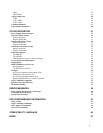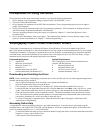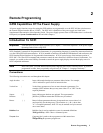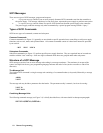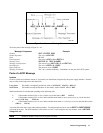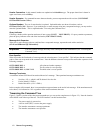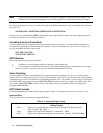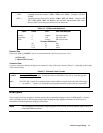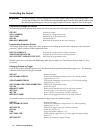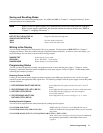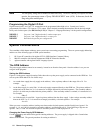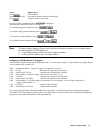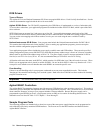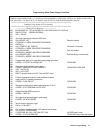
14 Remote Programming
Note The SCPI parser traverses the command tree as described in Appendix A of the IEEE 488.2 standard. The
"Enhanced Tree Walking Implementation" given in that appendix is not implemented in the power supply.
The following message shows how to combine commands from different subsystems as well as within the same subsystem
(see Figure 3-2):
VOLTAGE:LEVEL 7;PROTECTION 8;:CURRENT:LEVEL 50;PROTECTION ON
Note the use of the optional header LEVEL to maintain the correct path within the voltage and current subsystems and the
use of the root specifier to move between subsytems.
Including Common Commands
You can combine common commands with system commands in the same message. Treat the common command as a
message unit by separating it with the message unit separator. Common commands do not affect the active header path;
you may insert them anywhere in the message.
VOLT:TRIG 7.5;INIT;*TRG
OUTP OFF;*RCL 2;OUTP ON
SCPI Queries
Observe the following precautions with queries:
• Remember to set up the proper number of variables for the returned data.
• Set the program to read back all the results of a query before sending another command to the power supply.
Otherwise, a Query Interrupted error will occur and the unreturned data will be lost.
Value Coupling
Value coupling results when a command directed to send one parameter also changes the value of a second parameter.
There is no direct coupling among any power supply SCPI commands. However, be aware that until they are programmed,
uninitialized trigger levels will assume their corresponding immediate levels. For example, if a power supply is powered up
and VOLT:LEV is programmed to 6, then VOLT:LEV:TRIG will also be 6 until you program it to another value. Once
you program VOLT:LEV:TRIG to another value, it will remain at that value regardless of how you subsequently
reprogram VOLT:LEVEL.
SCPI Data Formats
All data programmed to or returned from the power supply is ASCII. The data may be numerical or character string.
Numerical Data
Table 2-1 and Table 2-2 summarize the numerical formats.
Table 2-1. Numerical Data Formats
Symbol Data Form
Talking Formats
<NR1> Digits with an implied decimal point assumed at the right of the least-significant
digit. Examples: 273 0273
<NR2>
Digits with an explicit decimal point. Example: 273. .0273
<NR3>
Digits with an explicit decimal point and an exponent. Example: 2.73E+2 273.0E-2



